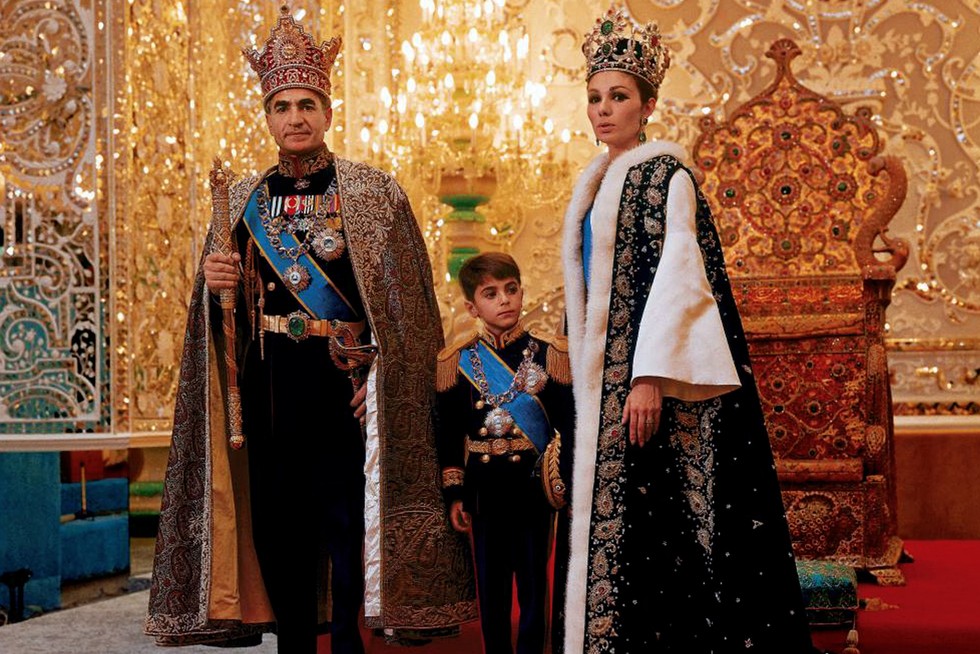“Raja Aau Desh Bachau,” is one of the commom slogan we hear in Nepal. After a more than 15 years of Nepal without their monarch, political leaders has not been able to fulfill the expectation of public. Thus, frustration is high among the people, out of which some rightist and royalist elements are trying to extract political benefits. However, people will not accept anything that seeks to turn the country backward if so RPP should have won the majority seat. They have been protesting restore the monarchy, however it have failed to create any impact. Here, we have presented some countries in the world which restored it’s monarchy at some point of time in the history.
Monarchy is one of the oldest forms of government in the world, but it has also faced many challenges and changes over the centuries. Some countries have abolished their monarchy, either by revolution, referendum, or constitutional reform, while others have maintained it as a symbol of tradition and continuity. Here are some examples of countries that have restored their monarchy at some point in history, and the reasons and consequences of their decisions.
Greece

Greece is perhaps the most notable example of a country that has restored its monarchy multiple times in the 20th century. The first restoration occurred in 1920, after the defeat of the Greek army in the Greco-Turkish War of 1919-1922. King Constantine I, who had been forced to abdicate in 1917 due to his pro-German stance in World War I, returned to the throne with the support of the royalist party and the majority of the voters in a referendum. However, his reign was short-lived, as he died in 1923 and was succeeded by his son George II, who faced another military coup and a second republic in 1924.
The second restoration happened in 1935, after a failed attempt by the republican government to suppress a royalist revolt. George II was invited back to the throne by the parliament, and another referendum confirmed his return with an overwhelming majority of 97.9%. However, his reign was also interrupted by the German occupation of Greece during World War II, and the subsequent civil war between the royalist and communist forces.
The third and final restoration took place in 1946, after the end of the civil war and the liberation of Greece from the Axis powers. George II was again confirmed as king by a referendum, with 68.4% of the votes. He died in 1947 and was succeeded by his brother Paul, who reigned until 1964. Paul’s son, Constantine II, became the last king of Greece, as he was deposed by a military junta in 1967, and the monarchy was abolished by a referendum in 1974, after the restoration of democracy.
Maldives

Maldives is another country that has experienced multiple changes in its form of government, including two restorations of its monarchy. The Maldives was a sultanate for centuries, until it became a British protectorate in 1887. In 1952, the sultanate was abolished and the Maldives became a republic, with Muhammad Amin Didi as the first president. However, the republic was short-lived, as Didi was ousted by a coup in 1953, and the sultanate was restored under Sultan Muhammad Farid Didi.
The second republic was established in 1968, after a referendum in which 81.23% of the voters opted to abolish the monarchy. The last sultan, Muhammad Fareed Didi, abdicated and became the first president of the republic. The Maldives remained a republic ever since, although it faced several political crises and coups in its history.
Mexico

Mexico is a country that had a brief and turbulent experience with monarchy in the 19th century. After gaining its independence from Spain in 1821, Mexico became a constitutional monarchy under Agustín de Iturbide, who proclaimed himself emperor as Agustín I. However, his reign lasted only ten months, as he was overthrown by a revolt led by Antonio López de Santa Anna, who established a federal republic in 1824.
The second and last Mexican empire was created in 1863, as a result of the French intervention in Mexico, which supported the conservative faction in the Mexican civil war. The French emperor Napoleon III offered the Mexican crown to Archduke Maximilian of Austria, who accepted it and became Maximilian I of Mexico. However, his empire faced strong resistance from the liberal forces loyal to the republican president Benito Juárez, who refused to recognize the foreign intervention. Maximilian was captured and executed by the republicans in 1867, and the Mexican republic was restored.
England

England is a country that had a brief period of republicanism in the 17th century, during the English Civil War and the Interregnum. The civil war was a conflict between the supporters of King Charles I and the Parliament, which opposed his absolutist and religious policies. The war ended with the execution of Charles I in 1649, and the abolition of the monarchy and the House of Lords. England became a republic, known as the Commonwealth of England, under the leadership of Oliver Cromwell, who ruled as Lord Protector until his death in 1658.
The republic faced many challenges, such as the wars with Scotland and Ireland, the invasion of Scotland by Charles II, the son of the executed king, and the political and religious divisions among the factions of the Parliament. After the death of Cromwell, his son Richard succeeded him as Lord Protector, but he lacked the authority and support of his father, and resigned in 1659. The monarchy was restored in 1660, after the Parliament invited Charles II to return to England and become king. The restoration was welcomed by most of the people, who were tired of the instability and austerity of the republic.
Poland and Lithuania

Poland and Lithuania are two countries that had a unique experience with monarchy and republicanism in the 16th and 17th centuries. The two countries formed a personal union in 1386, when the Polish queen Jadwiga married the Lithuanian grand duke Jogaila, who became king of Poland as Władysław II Jagiełło. The union was strengthened in 1569, when the two countries signed the Union of Lublin, which created a federal state known as the Polish-Lithuanian Commonwealth. The commonwealth was governed by an elected king and a parliament, known as the Sejm, which had the power to veto any legislation. The commonwealth was one of the most powerful and tolerant states in Europe, but it also faced many internal and external threats, such as the wars with Russia, Sweden, and the Ottoman Empire, the rebellions of the Cossacks and the Protestants, and the corruption and anarchy caused by the nobility.
The commonwealth was effectively abolished in 1795, after the third and final partition of Poland and Lithuania by Russia, Prussia, and Austria, which divided its territory among themselves. The commonwealth was briefly restored in 1807, when Napoleon created the Duchy of Warsaw, a French client state, from the Polish lands annexed by Prussia. However, the duchy was dissolved in 1815, after the defeat of Napoleon, and most of its territory was incorporated into the Congress Poland, a Russian puppet state. The commonwealth was finally restored in 1918, after the end of World War I and the collapse of the Russian, German, and Austro-Hungarian empires, which allowed Poland and Lithuania to regain their independence as republics.
Iran

Iran is a country that had a long history of monarchy, dating back to the ancient Persian empires. The last dynasty of the Iranian monarchy was the Pahlavi dynasty, which was established in 1925 by Reza Shah, a former military officer who overthrew the Qajar dynasty. Reza Shah modernized and secularized Iran, but he also ruled as a dictator, suppressing the opposition and the religious establishment. He was forced to abdicate in 1941, after the Anglo-Soviet invasion of Iran, and was succeeded by his son Mohammad Reza Shah, who continued his father’s policies, but also faced growing discontent and resistance from the nationalists, the communists, and the Islamists.
The Iranian monarchy was abolished in 1979, after the Iranian Revolution, which was led by the exiled cleric Ayatollah Khomeini, who returned to Iran and became the supreme leader of the Islamic Republic of Iran. The revolution was supported by millions of Iranians, who were dissatisfied with the corruption, repression, and westernization of the shah’s regime. The revolution also sparked a hostage crisis, a war with Iraq, and a series of political and social changes that transformed Iran into a theocratic and authoritarian state.
Romania

Romania became a kingdom in 1881, under the rule of the Hohenzollern-Sigmaringen dynasty. The monarchy was abolished in 1947, after the Soviet occupation and the forced abdication of King Michael I. The monarchy was briefly restored in 1991, when Michael returned to Romania and was recognized as a former head of state, but not as a reigning monarch. The monarchy was abolished again in 2016, after the death of Michael and the renunciation of his heirs.
Afghanistan

Afghanistan was a monarchy from 1747 to 1973, under the Durrani and Barakzai dynasties. The monarchy was abolished in 1973, after a coup led by Mohammad Daoud Khan, a cousin of King Zahir Shah. The monarchy was restored in 2002, after the fall of the Taliban regime and the intervention of the United States. Zahir Shah returned to Afghanistan and was given the title of “Father of the Nation”, but not as a reigning monarch. He died in 2007, and his son Ahmad Shah Khan claimed the throne, but was not recognized by the government.
Libya

Libya was a monarchy from 1951 to 1969, under the rule of King Idris I, who led the country to independence from Italy and the United Kingdom. The monarchy was abolished in 1969, after a coup led by Muammar Gaddafi, who established a socialist republic. The monarchy was restored in 2011, after the overthrow of Gaddafi and the intervention of NATO. Idris’s grandson, Mohammed El Senussi, returned to Libya and was recognized as the head of the Senussi royal family, but not as a reigning monarch. He currently lives in exile in London.
Spain

Spain was a monarchy from 1479 to 1931, under the rule of the Trastámara, Habsburg, and Bourbon dynasties. The monarchy was abolished in 1931, after the proclamation of the Second Spanish Republic, following the municipal elections. The monarchy was restored in 1939, after the victory of Francisco Franco in the Spanish Civil War, who appointed Juan Carlos, a grandson of King Alfonso XIII, as his successor. The monarchy was abolished again in 2020, after the abdication of Juan Carlos and the corruption scandals involving him and his son, King Felipe VI. The current status of the monarchy is unclear, as Felipe remains the nominal head of state, but has renounced his inheritance and distanced himself from his father.








Comments